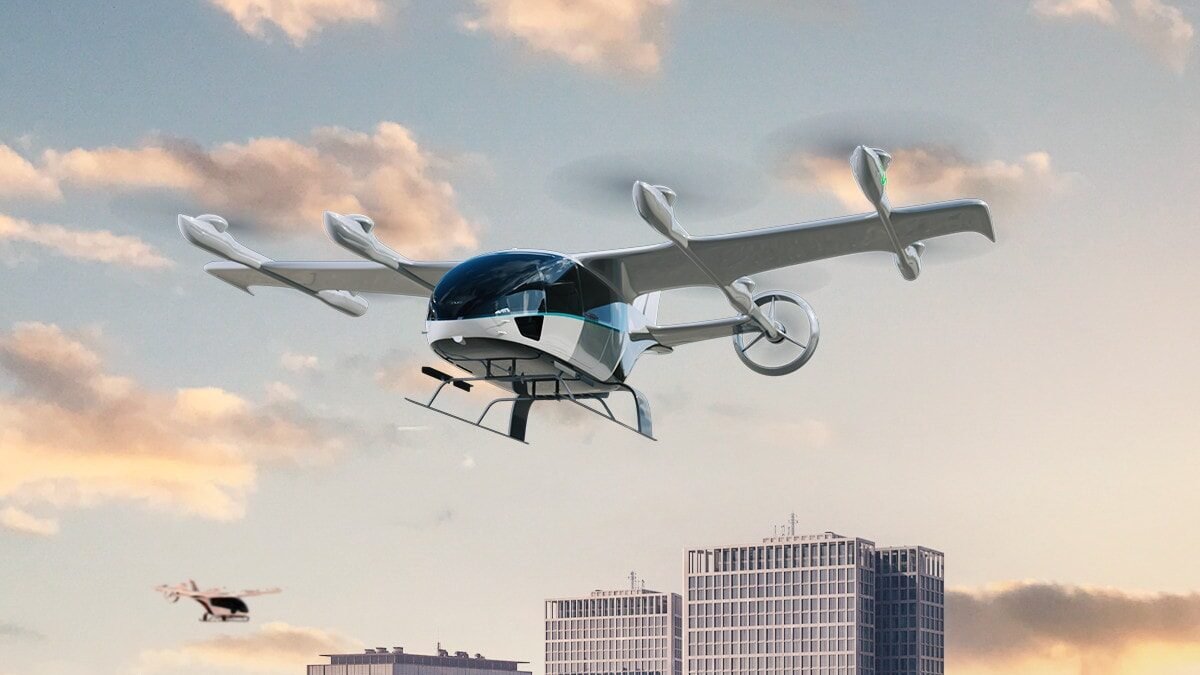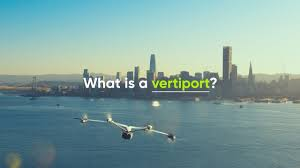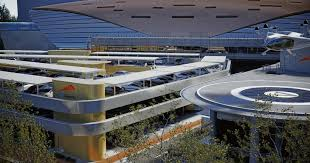Now Reading: “Vertiports Dubai’s Futuristic : Powering the Flying Taxi Dream Now 2025”
-
01
“Vertiports Dubai’s Futuristic : Powering the Flying Taxi Dream Now 2025”
“Vertiports Dubai’s Futuristic : Powering the Flying Taxi Dream Now 2025”

Table of Contents
Dubai, famous for its skyscrapers, luxury lifestyle, and record-breaking technology, is now preparing to launch one of its most ambitious projects yet – flying taxis. While the world is fascinated by these air taxis, there’s a hidden hero making this possible: vertiports.
But what exactly are vertiports? Why are they so important for Dubai’s flying taxi plans? And how will they change the way people move in this futuristic city? Let’s find out.
What is a Vertiport?

A vertiport is a special type of airport designed only for vertical take-off and landing aircraft (known as VTOL). These include drones, flying cars, and especially flying taxis – electric aircraft that can lift off and land vertically like helicopters but are quieter, faster, and better for the environment.
Unlike regular airports that need long runways for planes to take off and land, vertiports need only small spaces – such as the roof of a building, a corner of a busy street, or a dedicated platform near shopping malls and hotels.
Simply put, vertiports are to flying taxis what bus stops are to buses.
Why is Dubai Building Vertiports?

Dubai wants to be the first city in the world to offer a full flying taxi service by 2026. To make this a reality, Dubai’s Roads and Transport Authority (RTA) has partnered with advanced air mobility companies like Joby Aviation and Skyports.
But flying taxis cannot work alone. They need a proper network of vertiports across the city where they can safely pick up and drop off passengers. Without vertiports, these flying vehicles would have nowhere to land or charge their batteries.
This is why Dubai is building four main vertiports in its first phase, at key locations:
- Dubai International Airport (DXB) – For passengers arriving from other countries.
- Downtown Dubai (near Burj Khalifa) – For business travelers and tourists.
- Dubai Marina – For easy access to the beach and luxury residences.
- Palm Jumeirah – For hotel guests and island visitors.
More vertiports are expected to follow once the network becomes successful.
How Do Vertiports Work?
A vertiport looks like a small airport terminal but built for vertical aircraft. It includes:
- Landing Pads – Strong, flat surfaces where air taxis can safely land and take off.
- Charging Stations – Most flying taxis run on electricity, so vertiports have fast-charging points to power the vehicles.
- Passenger Lounges – Like waiting areas at airports, these lounges offer comfort, check-in services, and security checks for passengers.
- Control Systems – To manage air traffic safely, vertiports have advanced communication systems connected to other vertiports and air control towers.
Some future designs even suggest that vertiports will be built on top of skyscrapers, shopping malls, and transport hubs to make flying taxis easily reachable for everyone.
Benefits of Vertiports in Dubai
- Faster Travel Time
Flying taxis will reduce travel time by more than half. A car ride from Dubai Marina to Dubai International Airport may take 45 minutes or more, but an air taxi could make the same trip in just 10 minutes. - Eco-Friendly Transportation
Flying taxis run on electric batteries, meaning they produce zero pollution, unlike cars or planes that burn fuel. - Less Traffic on Roads
With air taxis flying above the city, there will be fewer cars on the road, which could help reduce Dubai’s heavy traffic jams. - Boost to Tourism and Economy
Dubai’s flying taxis and vertiports will attract tech-savvy tourists and investors from all over the world, boosting the city’s global image as the capital of futuristic travel.
Challenges of Building Vertiports
Even with these exciting benefits, building a city-wide network of vertiports is not easy. Some of the main challenges include:
- Safety and Regulations: Air travel has strict rules. Flying taxis and vertiports must pass all international safety tests and government regulations.
- High Costs: Building vertiports and setting up charging stations and air traffic systems will cost millions of dollars.
- Public Acceptance: Some people may feel nervous about traveling in small, flying vehicles. Dubai needs to educate the public about the safety and ease of flying taxis.
- Weather Conditions: High winds, sandstorms, and extreme heat could affect the flying taxi services. Vertiports must be designed to handle Dubai’s tough climate.
What is the Future of Vertiports in Dubai?
By 2030, Dubai hopes to have a complete network of vertiports connecting all parts of the city, including popular spots like Dubai Mall, Expo City, and even areas outside Dubai like Abu Dhabi.
Experts believe that once vertiports and flying taxis become common, they could replace many short-distance car trips, reducing pollution and saving time for millions of travelers.
In the future, flying cargo drones may also use vertiports to deliver goods and packages, making shopping faster and cheaper.
Conclusion
Vertiports are the invisible backbone that will make Dubai’s flying taxi dream come true. Without them, the flying taxis cannot land, recharge, or safely pick up passengers. These special stations will change how people think about travel, making short, fast air journeys part of everyday life.
As Dubai moves closer to launching this futuristic transport system, vertiports will become as common and important as metro stations and airports – a true symbol of the city’s unstoppable ambition to lead the world in innovation.
Read More:- Shobha Realty Launches Its Most Luxurious Project Yet—Full Details Inside 2025





















